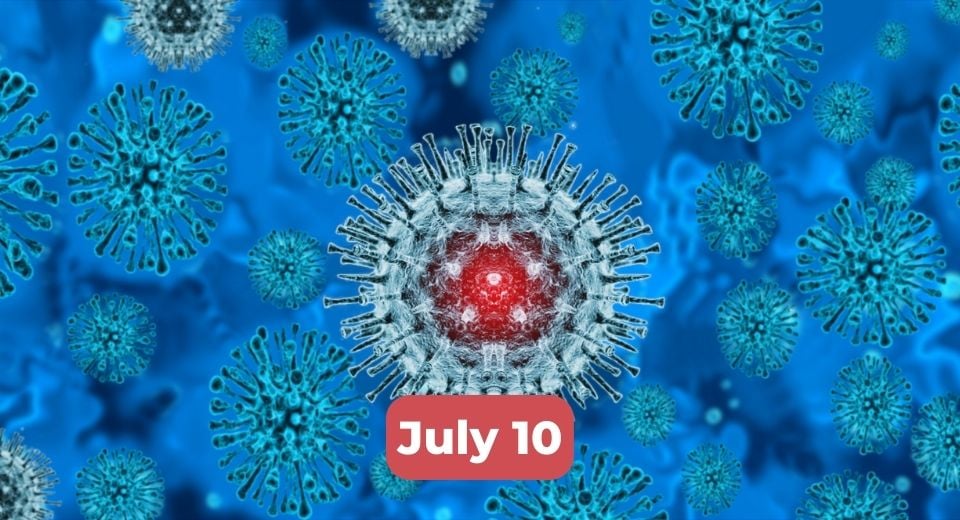
Author: Chelsea Lawrance, ATC, PA-C
The recent COVID-19 pandemic has put us all on high alert when it comes to yet another “new” virus. However, it is important to know the facts about Monkeypox before we hit the panic button.
What is Monkeypox?
Monkeypox is part of the orthopoxvirus and is a virus that was first found in the 1950s. Its name originates from the first cases that were found in monkeys. The virus that causes Monkeypox is in the same family as the Smallpox virus and has a similar presentation. Monkeypox is primarily seen in parts of Africa. The first cases in humans were in the 1970s in Africa in humans who were exposed to infected small forest animals.
How does Monkeypox spread?
The virus can spread from animals to humans, known as a zoonotic infection. It typically spreads through close contact with an ill animal’s infected bodily fluid or a bite, but can also spread through handling infected animals. It can also spread human to human via close contact with the lesions on the skin, through large respiratory droplets, or from mother to baby via the placenta. This includes face to face contact within 6 feet without personal protective equipment for 3 or more hours. Human to human transmission is generally low. The most recent outbreak this year is believed to be connected to sexual activity among those who have the virus.
How does Monkeypox present?
The typical incubation period (time it takes for the illness to present) is 6-13 days. In atypical cases, it can be 5-21 days. Many cases can be mild and even asymptomatic. For symptomatic cases, patients can present with fevers, chills, body aches, swollen lymph nodes, headache and a rash that consists of raised bumps found throughout the body.
How is Monkeypox diagnosed?
If Monkeypox is suspected, laboratory confirmation is necessary to diagnose the viral illness.
How is Monkeypox treated?
Monkeypox is a self-limiting disease, meaning it typically resolves on its own within 2-4 weeks. The mainstay of treatment for this virus is supportive care. In severe cases, hospitalization for IV hydration may be needed. Antiviral therapy (the same ones used for Smallpox) may be considered for severe cases and for those at high risk of severe disease, such as immunocompromised patients, children, pregnant and breastfeeding women. Those suspected and diagnosed with Monkeypox will need to be isolated until resolution of the illness. There have been no documented deaths related to Monkeypox in the United States.
How can we prevent a Monkeypox infection?
The Smallpox vaccine has shown to prevent and reduce infections of Monkeypox. Routine vaccinations against Smallpox were done in the United States up until 1972. Communities and occupations at high risk of infection may be vaccinated to protect them against the virus. Some data supports post-exposure prophylaxis and vaccination. Personal protective equipment (gloves, masks, and gowns) should be worn when around those who are suspected or have been diagnosed with Monkeypox. Close monitoring of individuals who have had recent exposure to someone with Monkeypox is necessary and may require isolation until Monkeypox can be ruled out.
What can we expect with this new outbreak?
Researchers and scientists do not currently expect this current outbreak to become a “big epidemic”, but many questions remain about the spreading virus in non-endemic areas. Researchers continue to keep a close eye on new cases and are doing diligent contact tracing.
If you believe you may have contracted the virus or have been exposed to someone who has Monkeypox, please contact your healthcare provider.
Isaacs, Stuart N. “Monkeypox.” UpToDate, edited by Martin S. Hirsch and Jennifer Mitty, 2 June 2022, www.uptodate.com/contents/monkeypox?search=monkeypox&source=search_result&selectedTitle=1~15&usage_type=default&display_rank=1.
“Monkeypox.” Centers for Disease Control and Prevention, www.cdc.gov/poxvirus/monkeypox/index.html.
The information provided is for general interest only and should not be misconstrued as a diagnosis, prognosis or treatment recommendation. This information does not in any way constitute the practice of medicine, or any other health care profession. Readers are directed to consult their health care provider regarding their specific health situation. Marque Medical is not liable for any action taken by a reader based upon this information.

